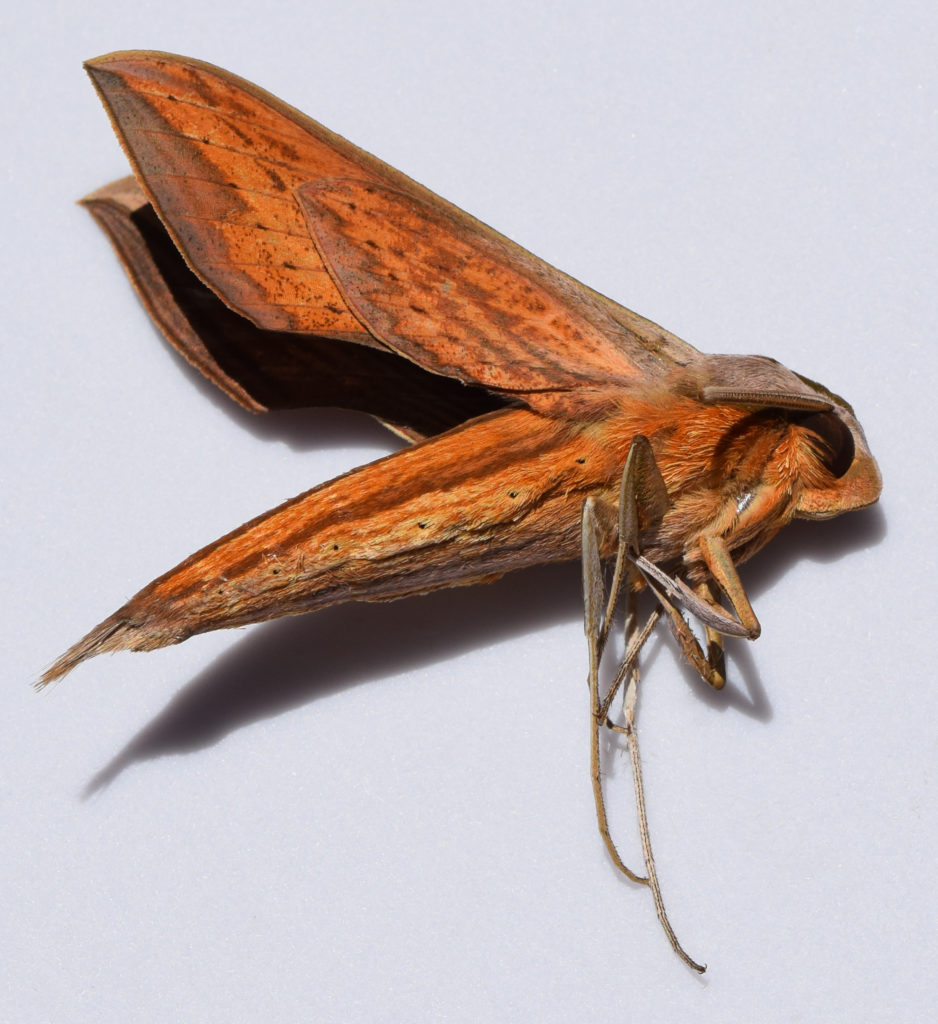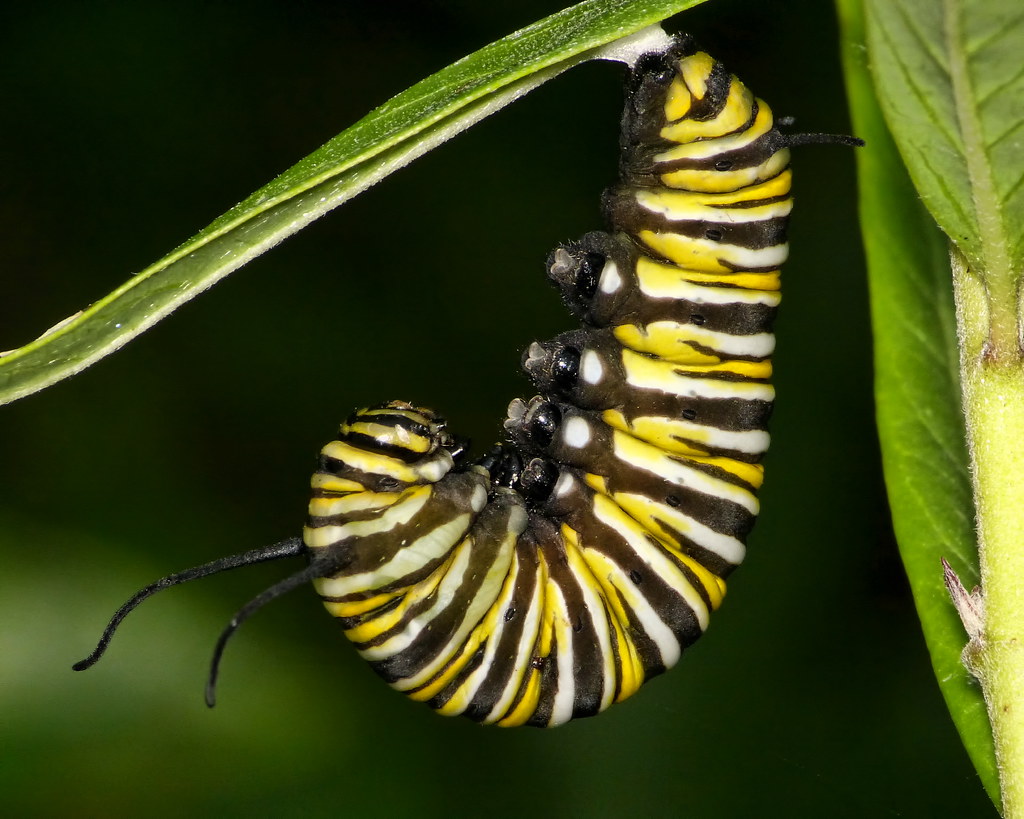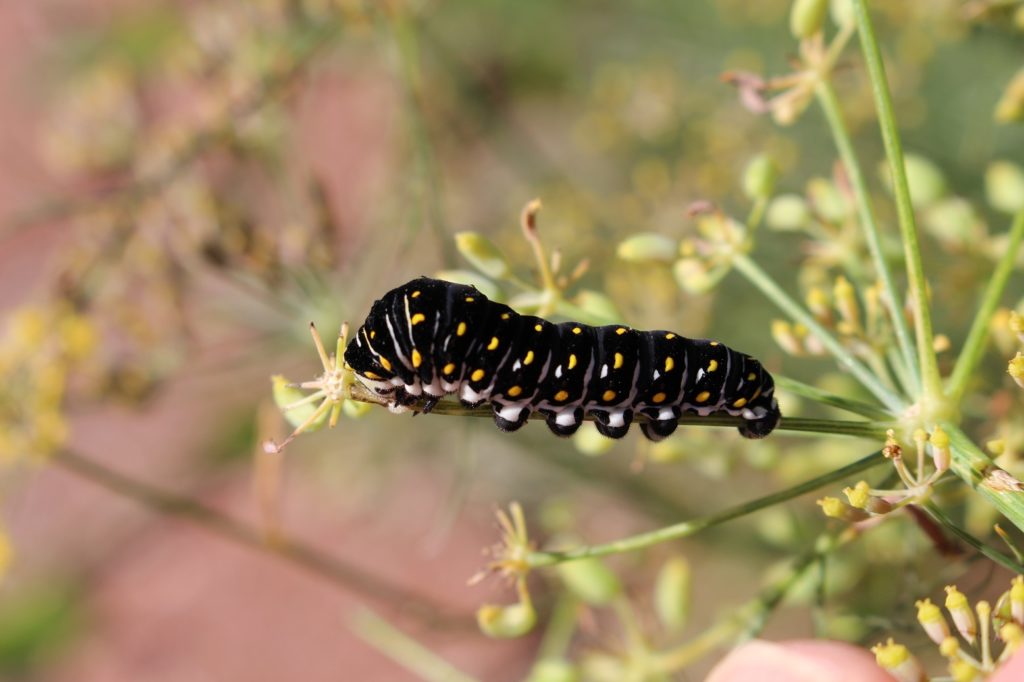We were watering Pentas earlier this week and came across this funky looking fellow (above). At first, we thought it was a more common Tomato Hornworm, but after doing some research, it’s a Tersa Sphinx (Xylophanes tersa) caterpillar! Actually, both in the photo are Tersa Sphinx caterpillars at different stages. Pretty soon they’ll transform into their beautiful moth form.

Caterpillars have been a big topic of conversation here at Gill’s this Summer; more rain than usual = more caterpillars. A good rule of thumb is to leave them alone unless you see a large congregation and they’re eating enough of a plant to cause harm. A few munched leaves here and there is not a problem. If you do get a large infestation, you can treat with organic Thuricide that only targets caterpillars.
Most different species of caterpillars are only attracted to specific host plants. Pentas are a host plant for the Tersa Sphinx, which was a big clue for identification. We know that Monarch caterpillars like milkweed, Gulf fritillary’s host plant is Passion Vine, and Swallowtail caterpillars like Rue and Dutchman’s Pipe Vine.



Once caterpillars reach their butterfly or moth form, they feed on nectar from a broader variety of South Texas plants like Lantana, Zinnia, Mist flowers, Turk’s Cap, and lots more. So, it’s a good idea to plant host plants and nectar plants together to enjoy the caterpillar’s full life cycle.

-Jesse



Reader Interactions